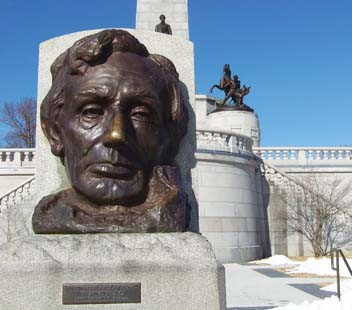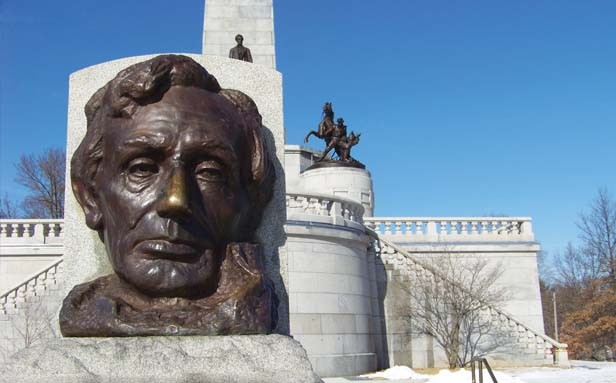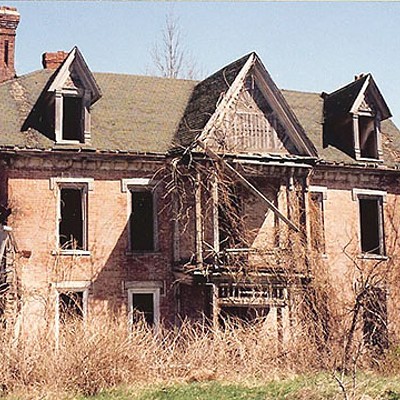My Christmas shopping being done, I curled up in front of a glowing space heater to catch up on my reading. At the top of the pile was the official 2012 visitors guide to Springfield, “your not so far away getaway.”
Published by the Convention and Visitors Bureau, the 56-page guide must have left many a reader with the itch to head out for the Midwestern skies. The operative words are fun, adventure, magic. (Don’t laugh. Magic happens in Springfield. In high school I got kissed in Douglas Park.) Visitors are told that Greater Springfield is affordable but romantic, “the perfect combination of ease and excitement” – why, it’s almost Peoria.
To be sure, the guide indulges in the lily-gilding that is common to all promotional literature. “Every day,” we were told, “Springfield finds ways to keep history alive.” True to some extent – Springfield streets and neighborhoods are an outdoor museum of outmoded zoning policies – but I doubt if Jerry Jacobson would agree with the larger assertion.
Apparently what I complain of as faults in the 2012 guide are considered virtues by the would-be tourist. Attendance at most Springfield-area historic sites in the first 11 months of 2012 was up more than three percent over last year. But while this increase is gratifying from an economic point of view, it should be remembered that it is measured from the very low tourism numbers of recent years. Abe World’s count of 285,321 through November, for instance, was slightly higher than the total for all of 2011, but it still fell far short of the more than 400,000 visitors who toured the place in 2009.
The year’s modest increase in traffic is especially sobering when you recall that in 2012 the release of Spielberg’s Lincoln and the ongoing hoo-hah about the Civil War centennial kept would-be travelers’ attention focused on Lincoln and his presidency. Tellingly, the city’s many non-Lincoln historic sites enjoyed no such boost, and remained as barren of visitors as the private quarters of the Executive Mansion.
It was once thought that tourists would be to Springfield what oil was to Texas. So it has proved – it takes a lot more investment to make money from either these days. The managers and volunteers at Springfield’s state-owned sites in 2012 worked like navvies to attract a crowd. For example, the Lincoln Tomb drew some 30,000 more visitors in the first eleven months of 2012 compared to 2011, and attendance at the three nearby war memorials – almost certainly spillover from the tomb crowds – went up 20 percent. The bigger crowds did not gather because there was anything new to see at these monuments per se. The Lincolns are still dead, and we still lost in Vietnam. However, the site management has started offering candlelight tours and Civil War bedtime stories and interpreters dressed up as soldiers of the period.
The problem with relying on theater to tell Lincoln’s story is the same one faced by movie-makers, who have to constantly contrive flashier new ways to tell the same old stories. As the Disney-fied Lincoln becomes passé, a Spielberg-ized Lincoln would at least be novel, although it’s hard to imagine that dramatizations of Lincoln bribing lawmakers with taxpayers’ money would be appealing to an American public that prefers heroes to politicians.
Just as Springfield’s retailing industry thrives by providing stores for every customer niche, so its history industry should offer museums for every taste. The model here is the Creation Museum (“Prepare to Believe”) which opened down in Kaintuck’ in 2007. It presents the Biblical accounts of the past since history dawned 6,000 years ago, showing a world in which dinosaurs cavorted with cavemen and a white Adam cavorted with Eve in a Garden of Eden done up to look like the Nashville Sybaris resort. It’s drawing millions.
Millions may admire Lincoln for putting Johnny Reb in his place and lifting the slaves out of theirs, but as many or more see his victories as defeats not only for the South but for the nation. In the same way that the Creation Museum celebrates fundamentalist Christian views of evolution and geology, a new War of the Rebellion museum could celebrate unregenerate Southern views of American history. Think how many Americans would flock to an anti-Abe World to see the story of the Civil War shorn of liberal pieties, a narrative in which their side won and the darkies were never set free.
Think of the restaurant meals sold, the hotel rooms booked, the emergency room visits made as visitors spontaneously attempt their own Civil War enactments on our streets. It would be America’s Temple Mount and Dome of the Rock, crowded into Illinois’ new Jerusalem. Now that would be keeping history alive.
Contact James Krohe Jr. at [email protected].
Note: Readers who wish to provide their guests with a really good visitor guide should consider IT’s own Capital City Visitor. Click Special Editions at http://www.illinoistimes.com.























